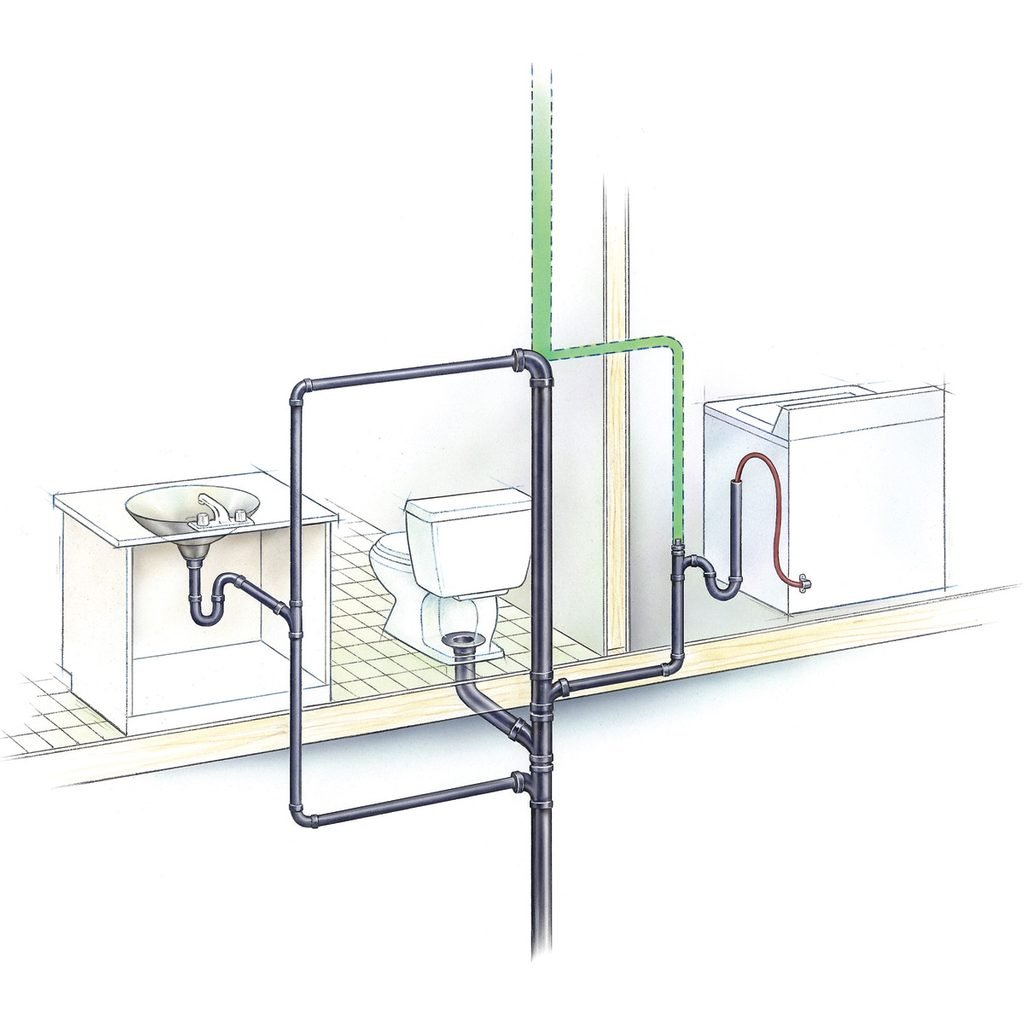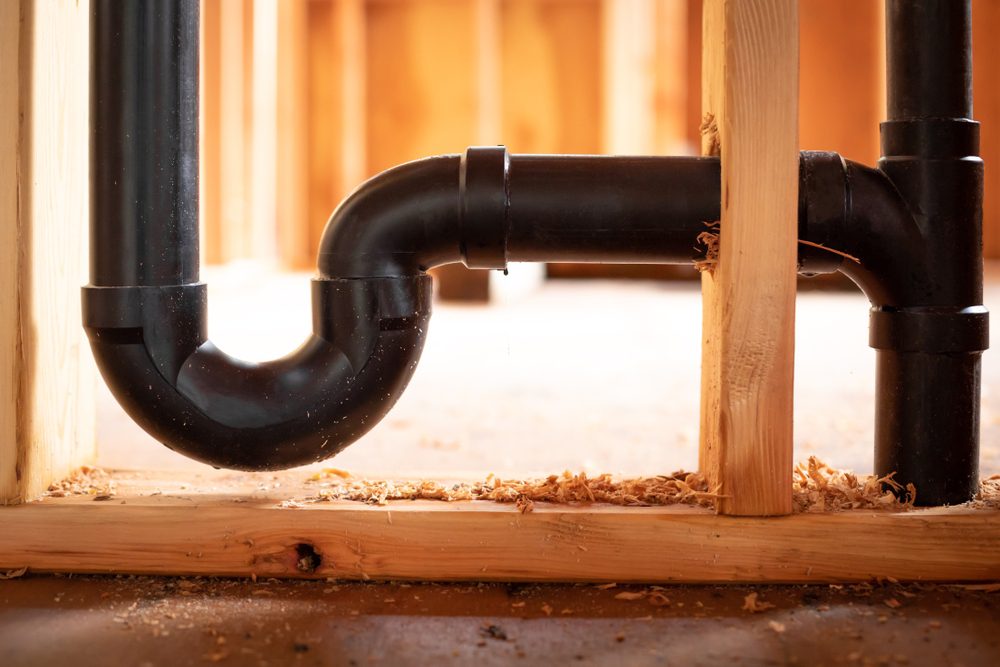The Importance of Adequate Ventilation in Your Home's Plumbing Systems
The Importance of Adequate Ventilation in Your Home's Plumbing Systems
Blog Article
Everyone maintains their own way of thinking involving What Is A Plumbing Vent & How Do They Work?.

Appropriate ventilation in plumbing systems is typically ignored, yet it is critical for preserving the functionality and safety of your home's pipes. Ventilation helps manage atmospheric pressure, stop the build-up of hazardous gases, and guarantee the efficient elimination of waste. In this overview, we will check out the relevance of proper pipes air flow, just how it works, and the advantages it offers your pipes system.
Comprehending Ventilation in Plumbing
Air flow in pipes refers to the network of pipelines that enable air to flow with the water drainage system. These vents serve numerous objectives, including controling air pressure within the pipelines, protecting against sewage system gases from getting in the home, and helping in the smooth flow of wastewater.
Just How Air Flow Works in Pipes Solutions
Atmospheric Pressure Policy
Correct air flow preserves balanced air pressure within the pipes system. When water streams through pipes, it displaces air. Without adequate air flow, this variation can develop unfavorable pressure, resulting in reduce drains pipes or siphoning of water from traps, which can trigger unpleasant odors to seep into the home.
Avoiding Sewage System Gas Buildup
One of the most important features of plumbing vents is to prevent drain gases, such as methane and hydrogen sulfide, from collecting within the home. These gases can present severe health and wellness dangers and are highly combustible. Vent pipelines enable these gases to escape securely outside.
Aiding in Waste Elimination
Air flow helps in the effective removal of wastewater by preventing airlocks in the drainage system. When air can flow openly through the vents, it enables water and waste to stream efficiently via the pipes, lowering the threat of clogs and backups.
Types of Pipes Vents
Main Heap Vent
The main pile vent, also called the vent stack, is the main air vent in a plumbing system. It extends from the primary drainpipe line up through the roofing, enabling gases to get away and fresh air to enter the system.
Branch Vent
Branch vents link to the primary stack vent and offer individual components, such as sinks, bathrooms, and showers. These vents make certain that each component has sufficient air flow to work properly.
Air Admission Valve (AAV).
An Air Admission Valve (AAV) is a one-way shutoff that allows air to get in the pipes system without the requirement for a typical air vent pipe extending with the roof covering. AAVs are commonly utilized in restorations or areas where mounting a standard air vent is unwise.
Indicators of Poor Air Flow in Plumbing.
Slow Draining Fixtures.
If your sinks, tubs, or commodes are draining pipes slowly, it could be an indication of bad air flow. Inadequate air circulation can produce a vacuum cleaner effect, making it difficult for water to drain effectively.
Gurgling Sounds.
Gurgling noises coming from drains are usually an outcome of air being drawn via water traps due to unfavorable pressure in the pipelines. This is a clear sign of inadequate air flow.
Undesirable Smells.
Sewage system smells inside your home are a red flag that your plumbing system is not appropriately aerated. This might imply that sewer gases are not being appropriately aired vent outside, bring about potentially hazardous conditions.
Common Air Flow Mistakes.
Inadequate Vent Sizing.
Utilizing small air vent pipelines can cause poor air flow and pressure imbalances in the system. It's important to utilize vents that satisfy the certain needs of your plumbing system.
Improper Vent Placement.
Putting vents also much from the components they offer can lower their performance. Appropriate positioning makes certain that air can move easily and successfully via the system.
Ignoring Code Needs.
Building regulations supply certain guidelines for pipes air flow. Overlooking these codes can lead to a system that stops working to function appropriately and might result in expensive fixings or health hazards.
Benefits of Correct Air Flow.
Improved System Effectiveness.
Appropriately ventilated plumbing systems run more effectively, with less obstructions, faster draining pipes, and much less strain on the pipes. This efficiency extends the lifespan of the pipes system.
Improved Air High Quality.
By stopping drain gases from entering your home, appropriate ventilation adds to much better indoor air quality, making your living setting healthier and much more comfortable.
Preventing Water Damage.
Appropriate air flow aids stop water from being siphoned out of catches, which can lead to sewage system gases getting in the home and triggering water damage with time.
Steps to Ensure Appropriate Air Flow.
Consulting Plumbing Codes.
Always speak with neighborhood pipes codes when making or customizing your pipes system. These codes give the necessary guidelines for correct venting and guarantee your system meets security criteria.
Regular Examination and Upkeep.
Normal evaluations can aid determine prospective ventilation issues before they come to be significant problems. Maintenance jobs, such as cleaning vent pipes and looking for obstructions, are crucial for maintaining the system in good working order.
Professional Installment.
For new installations or significant modifications, it's a good idea to work with a specialist plumbing. They have the competence to guarantee the ventilation system is appropriately designed and set up according to code.
Final thought.
Proper air flow is an essential part of any type of plumbing system, guaranteeing that it functions efficiently and securely. By understanding the importance of ventilation, identifying the signs of bad air flow, and taking actions to maintain your system, you can prevent pricey issues and shield your home's air high quality.
4 Things You Should Know About Your Plumbing Vents
What Plumbing Vents Are
Also called a vent stack, a plumbing vent is a vertical pipe attached to your drain line that runs through your roof. The plumbing vent pipe, or plumbing air vent, removes gas and odors from your plumbing system and allows fresh air to enter the pipes, helping the water to flow out of the drain pipes.
What Plumbing Vents Do
Plumbing vents have two basic functions. One of which is to allow unpleasant smelling wastewater and sewer gasses to escape your plumbing system instead of entering your home. Plumbing vent pipes are typically located on roofs, away from windows, to ensure the fumes exit the home completely.
The other function of the plumbing vent is to move fresh air into your plumbing system. This helps move water through every plumbing fixture in your house, like toilets and sink drains. Think of the way in which you need to let a little air into the bottle as you pour soda in order to make the drink flow smoothly.
Different Types of Plumbing Vents
True vent: This is the most common vent option. In simplest terms, a true vent is a vertical pipe attached to your drain line that exits through the roof. They often function as the main vent that other fixtures can connect to. Re-vent pipe or auxiliary vent: Attached to the drain line near specific plumbing fixtures, re-vent pipes run up and over to connect to the main vent. Common vent: Two plumbing fixtures installed on opposite sides of a wall are typically tied into the vent stack using something known as a sanitary cross. Wet vent: This venting option operates as a drain pipe and a vent at the same time. Wet vent drainage systems drain water from one fixture while venting the air from another. Although they’ve been used for over 100 years, wet vent systems have only recently been added to the plumbing code in many areas. If you’re planning on installing one in a bathroom remodel, make sure you check your local code prior to construction. Loop vent: For free-standing fixtures like kitchen island sinks, loop vents are ideal. These vent pipes run under the floor, rise from the P-trap, and create a loop inside the cabinet sink. Air admittance valve: An AAV is a one-way mechanical valve typically installed at the site of the plumbing fixture. AAVs allow venting to occur without having to tie into a larger venting system. They’re ideal for venting fixtures where you aren’t able to easily connect to an existing vent system. Common Plumbing Vent Issues
Although vent pipes typically don’t have water flowing through them, they’re still subject to many typical plumbing issues. For example, clogs are one of the most common problems associated with sewer vent pipes. If your vent pipe gets clogged, all of your plumbing fixtures tied into the vent stack will be affected.
A sink with a slow drain that bubbles and gurgles or a strong sewage smell around your toilet are both indicators that your toilet vent pipe is clogged. Because most vent pipes exit through the roof, old leaves, twigs or even a bird’s nest could be clogging the pipe.
Clogs in your vent pipe system cause a buildup of negative pressure, meaning that water won’t be able to flow out of your home very well. It’s similar to putting your finger over the opening of a straw to trap water inside. When you remove your finger, the water is able to flow out of the straw.
If you suspect you have any blockage in your vent, make sure you have a professional come examine the situation. Left unchecked, a blocked air vent can lead to other costly repairs, like leaks and sediment buildup.
Under Pressure
Pipe vents are essential aspects of a home’s plumbing system. Owning a home means learning about all sorts of things you never put much thought into before. But by understanding as much as you can about the important systems of your home, you can keep those budgets intact and those anxiety levels low.
https://www.homeserve.com/en-us/blog/home-improvement/plumbing-vents/

I was shown that report about through a friend on our other web address. Loved our blog posting? Please quickly share it. Help other people check it out. Thanks for being here. Revisit us soon.
Book Maintenance Report this page